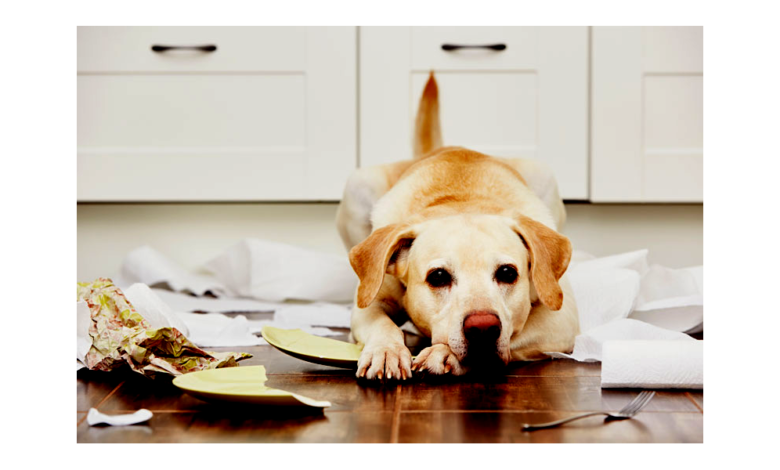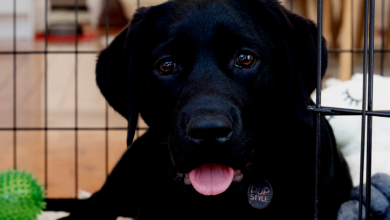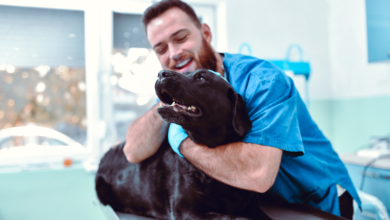
Preventing separation anxiety in pets is a growing concern for pet owners across the UK, especially as more people return to the office after years of remote work. Separation anxiety is a condition where pets experience extreme stress and distress when left alone, often leading to destructive behaviors, excessive barking, or even self-harm. This issue is particularly prevalent in dogs but can also affect cats and other companion animals. Understanding the root causes of separation anxiety and implementing effective strategies to prevent it is essential for ensuring your pet’s emotional well-being. In this article, we’ll explore UK expert advice on how to recognize, manage, and prevent separation anxiety in pets, helping you create a happier and healthier environment for your furry friend.
Preventing Separation Anxiety in Pets
Understanding Separation Anxiety in Pets
Separation anxiety occurs when a pet becomes overly attached to their owner and struggles to cope with being left alone. This condition is often triggered by changes in routine, such as a sudden increase in time spent apart, or traumatic experiences like being rehomed or abandoned. Pets with separation anxiety may exhibit a range of behaviors, including excessive barking or meowing, destructive chewing, house soiling, or attempts to escape.
In the UK, where many households have pets as integral family members, separation anxiety has become a significant issue. Experts emphasize that early intervention and prevention are key to addressing this problem. By understanding the signs and causes of separation anxiety, pet owners can take proactive steps to help their pets feel more secure and confident when left alone.
Recognizing the Signs of Separation Anxiety
The first step in preventing separation anxiety is recognizing the signs. These can vary depending on the pet’s species, breed, and personality. Common symptoms in dogs include pacing, whining, barking, or howling when left alone. They may also destroy furniture, scratch doors, or attempt to escape. Cats, on the other hand, may become excessively vocal, refuse to eat, or engage in destructive behaviors like scratching or urinating outside the litter box.
It’s important to differentiate between separation anxiety and other behavioral issues. For example, a dog that chews furniture out of boredom may not necessarily have separation anxiety. Consulting a veterinarian or a certified animal behaviorist can help determine the root cause of your pet’s behavior and guide you toward the appropriate solutions.
Creating a Positive Environment
One of the most effective ways to prevent separation anxiety is to create a positive and secure environment for your pet. This includes providing mental and physical stimulation to keep them occupied when you’re not home. Interactive toys, puzzle feeders, and treat-dispensing devices can help distract your pet and reduce their stress levels.
For dogs, regular exercise is crucial. A tired dog is less likely to feel anxious when left alone. Aim for at least 30 minutes of physical activity before you leave the house. Cats, on the other hand, benefit from vertical spaces like cat trees or shelves, which allow them to explore and feel safe.
Creating a designated “safe space” for your pet can also help. This could be a cozy corner with their bed, toys, and a piece of clothing that smells like you. Gradually acclimating your pet to this space can help them associate it with comfort and security.
Gradual Desensitization and Training
Gradual desensitization is a technique recommended by UK experts to help pets become more comfortable with being alone. This involves slowly increasing the amount of time your pet spends alone, starting with just a few minutes and gradually building up to longer periods. The key is to make these absences as stress-free as possible.
Start by leaving your pet alone for short periods while you’re still at home. For example, you could go into another room and close the door. Reward your pet with treats or praise when they remain calm. Over time, you can increase the duration and distance of your absences.
Training your pet to associate your departure with positive experiences is another effective strategy. For example, give them a special treat or toy that they only receive when you leave. This can help shift their focus from your absence to the enjoyable activity.
The Role of Routine and Consistency
Pets thrive on routine and predictability. Establishing a consistent daily schedule can help reduce their anxiety by providing a sense of stability. This includes regular feeding times, exercise, and play sessions.
When leaving the house, avoid making a big fuss. Prolonged goodbyes can increase your pet’s anxiety, as they may interpret your behavior as a sign that something is wrong. Instead, keep your departures and arrivals calm and low-key.
Consistency is also important when it comes to training and behavior modification. Stick to the same techniques and routines, and avoid reinforcing anxious behaviors by giving your pet attention when they’re stressed.
Using Calming Aids and Tools
There are several calming aids and tools available that can help prevent separation anxiety in pets. Pheromone diffusers, such as Adaptil for dogs or Feliway for cats, release synthetic versions of calming pheromones that can help reduce stress. These products are widely recommended by UK veterinarians and behaviorists.
Calming supplements containing natural ingredients like chamomile, valerian root, or L-theanine can also be effective. These are available in various forms, including treats, chews, or drops, and can be administered before you leave the house.
For pets with severe anxiety, prescription medications may be necessary. Consult your veterinarian to discuss options and determine the best course of action.
Seeking Professional Help
If your pet’s separation anxiety is severe or persistent, it may be necessary to seek professional help. Certified animal behaviorists and trainers can provide personalized guidance and support to address your pet’s specific needs.
In the UK, organizations like the Association of Pet Behaviour Counsellors (APBC) and the Royal College of Veterinary Surgeons (RCVS) can help you find qualified professionals in your area. These experts can work with you to develop a tailored behavior modification plan and provide ongoing support.
Read More: Best Pet Travel Carriers & Safety Tips for UK Road Trips
Conclusion
Preventing separation anxiety in pets requires patience, consistency, and a deep understanding of your pet’s needs. By recognizing the signs of anxiety, creating a positive environment, and using gradual desensitization techniques, you can help your pet feel more secure and confident when left alone. UK experts emphasize the importance of early intervention and professional guidance to address this issue effectively.
As pet owners, our goal is to ensure our furry companions feel loved and supported, even when we’re not by their side. By taking proactive steps and seeking expert advice, we can create a happier and healthier environment for our pets, allowing them to thrive in all situations.
FAQs
1. What are the common signs of separation anxiety in pets?
Common signs include excessive barking or meowing, destructive behavior, house soiling, and attempts to escape.
2. How can I help my pet feel more comfortable when left alone?
Provide mental and physical stimulation, create a safe space, and use gradual desensitization techniques.
3. Are certain breeds more prone to separation anxiety?
Yes, breeds like Labrador Retrievers, German Shepherds, and Border Collies are more susceptible, but any pet can develop separation anxiety.
4. Can calming aids help with separation anxiety?
Yes, pheromone diffusers, calming supplements, and prescription medications can be effective in reducing anxiety.
5. When should I seek professional help for my pet’s separation anxiety?
If your pet’s anxiety is severe, persistent, or causing harm, consult a veterinarian or certified animal behaviorist for guidance.







